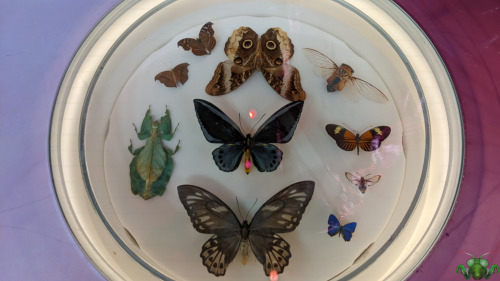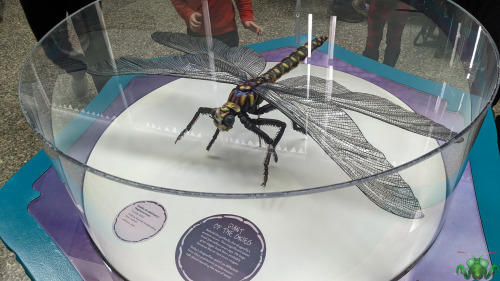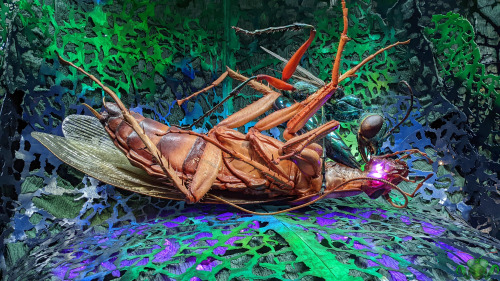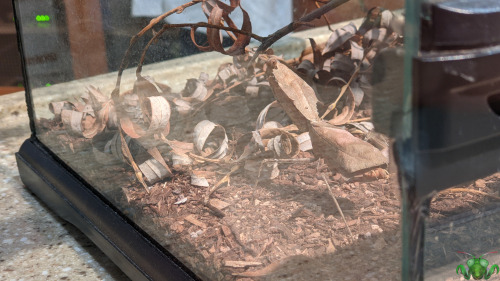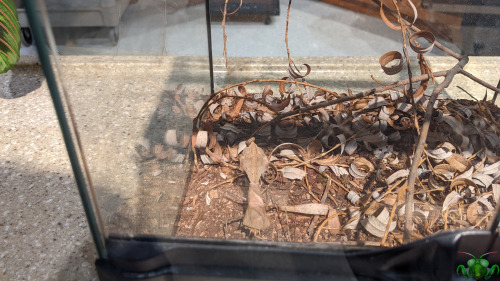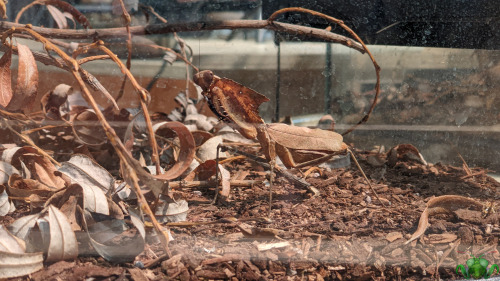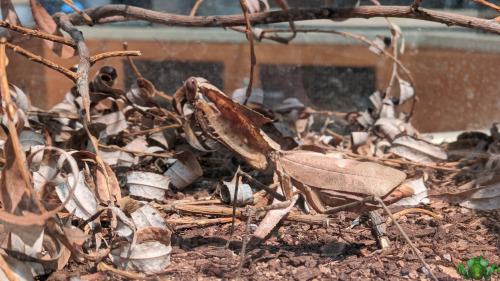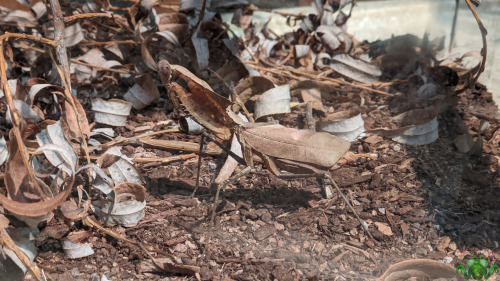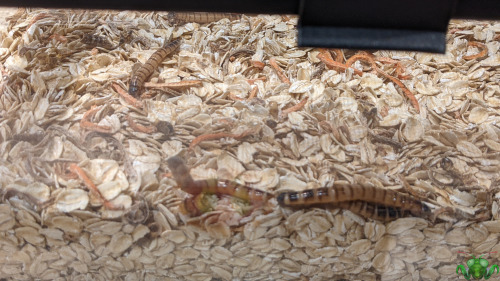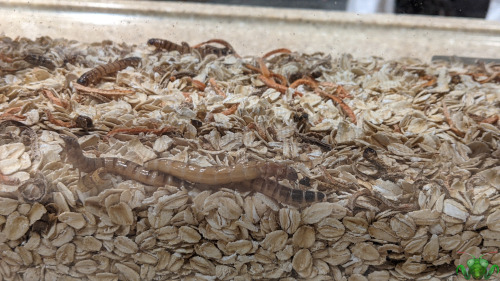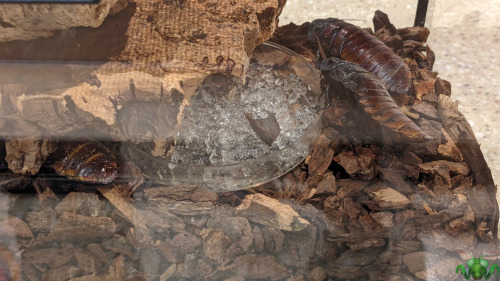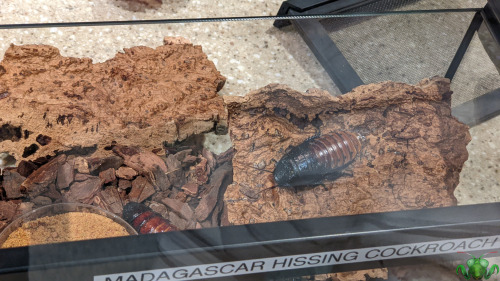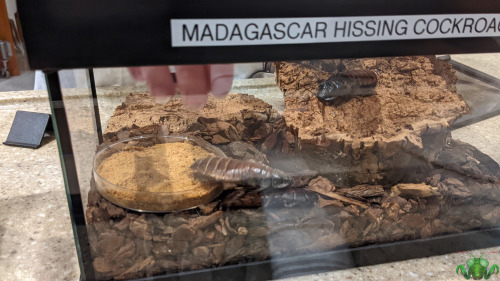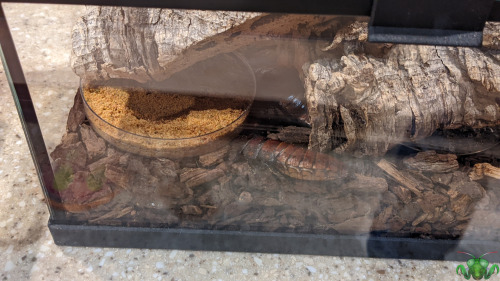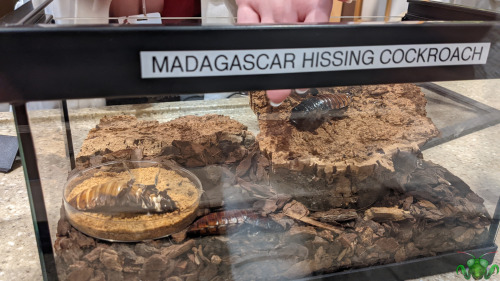#ontario science centre
Ontario Science Centre - Bug Lab 2022
Spoilers galore! These are some of the highlights of the Ontario Science Centre’sBug Lab Exhibition. This travelling exhibition was created by Te Papa, the museum of New Zealand in collaboration with Weta. It’s mostly geared towards children but there’s quite a bit here for all to enjoy, and I’m very grateful I was able to go. Yesterday was actually its last day in the OSC. This is an exhibition that I really think people should go to see when it arrives to their neck of the woods, so I won’t be sharing everything I’ve seen. Since these are exhibitions created by others, I’ve labelled them with the mantis logo and only take credit for the photography; the hard work and effort of this collaboration deserves all the spotlight it can, especially with all the wondrous displays! There are even interactive elements to enjoy such as magnifying glasses, touch screens and game parts. For myself, it’s all about the insects and what we can learn from them. I begin this showcase with the tribute to the Māori people that highlights how all life is connected and how insects have inspired them. You’ll have to discover those inspirations and life for yourself, but I can promise you they are all beautiful.
The showcase mentions that insects were created alongside “ugly things” by the gods, and so have included an insect native to New Zealand: the Weta, which often has a reputation for being called “ugly”. It may not be as traditionally appealing like other winged Orthopterans, it brings something more primal, powerful and wild to the fold; not something angry, but more like a old friend to the more temperature Grasshoppers. Important as that display is, children and visitors may be more drawn to the insect displays on showcase containing pinned insects and models. The pinned insect exhibits highlight the most prominent parts of the insect world to us: their biodiversity (including differences within even an order such as with Coleoptera), their beauty as seen with the showcase of winged insects, their evolutionary trajectory (as seen with an ancestor of modern day Odonates: the Griffinfly; 70cm wingspan) and how they can be used to benefit humanity. Insect wings were lighted as a marvel of design for flight technology and for the financial sector using Butterfly wing iridescence as inspiration (yay nanoholes). Swarming of insects even provides inspiration for drone movement and coordination with themselves! With all ideas, it’s amazing how inspiration can strike!
My favorite displays here are definitely the large models* of insects in their natural environment! The level of detail and story-telling is astonishing, especially with the Hymenopterans which is what I’d like to share! While a bit terrifying, we have a realization of how the Jewel WaspcapturesRoaches for its offspring. We call it brain surgery and the Waspcalls it incubation! Next to that, an intruder has found a hive and is marking it for the swarm! Fortunately, the hive’s defenders are ready for this scout and mobilize. There’s no secret to the power of the Asian Giant Hornet (and is the first true Hornet to grace this blog), but the Honeybees that live alongside it have adapted against it: they swarm the large intruder in coordination, form a Bee-ball and vibrate their bodies to generate heat to roast the Hornet. This exhibit even includes an interactive element to help generate heat to help the brave Bees! Though a few workers may fall defending their home, the colony lives in gratitude. Not yet safe however, the worker Bees also have to clean up the pheromone markers left by the scout so that other Hornets don’t pick up the trail. These are all astonishing feats of the natural world!
*Note: Other large models featured include displays of Dragonflies in flight and the camouflaging abilities of the Orchid Mantis (Hymenopus coronatus). You have to discover those for yourself.
Pictures were taken on February 20, 2022 at the Ontario Science Centre using a Google Pixel 4. Thank you for the Bugs!
Post link
Giant Dead Leaf Mantis - Deroplatys desiccata
The Ontario Science Centre showcase continues with a brand new insect; providing a much needed boost to a particularly cryptic insect order. Over the weekend I got the chance to visit the Bug Lab showcase created in collaboration between Te Papa,and Weta. The exhibitions feature large models of insects in their environment and exhibits that demonstrate the magnificence of insects and how much there is to learn about them and apply that knowledge to our own growth as a society. It’s mostly geared towards children, but I’m very grateful I was able to attend and experience it. Images of the showcase will arrive on the blog next Tuesday (déjà vu), while today we conclude the showcase of exotic insects for the public, many of them a familiar sight in the educational environment. Since these insects belong to the Centre, I’ve labelled them with the mantis logo. During the live showcase, our presenter was kind enough to allow us to take pictures of this cryptic creature after introducing them to the audience. This beautiful insect is more commonly found in Asia in forested areas such as Indonesia and Malaysia and could comfortably stand on the palm of your hand. She couldn’t be taken out of the terrarium for handling as her wings are fully developed.
True to its name, this solitary hunter owes its success to an effective camouflage that resembles a fallen, dried up leaf. This similarity goes down to the insect’s veins which mimic the veins of the leaf! This disguise allows this large Mantis to escape from predation by falling to the ground as a leaf would and to get the jump of unsuspecting meals by fooling them into thinking its just a leaf. It even pretends to blow in the breeze if it senses a disturbance (unseen in these images). When a tasty insect approaches as the Mantis maintains cover by barely moving, it suddenly lunges; the captured insects are no match for this hunter’s raptorial forearms lined with spikes! When hunched over with its claws together, it gives the impression that this insect is plotting something dastardly. Only just turning its head to keep you in its sights, the Mantis huntress is always vigilant. You can tell it’s a female by looking at the thorax’s shield (see Picture 2 for a good view): females have sharped points in the structure while males carry more rounded shields. Females are generally larger too! Finally, while it dresses to hunt and hide, if in jeopardy this Mantis reveals its secret defense. It flashes its wings, revealing prominent eyespots to startle predators! While its aggressor is frightened, the Mantis can escape and continue its hunt.
Pictures were taken on February 20, 2022 at the Ontario Science Centre using a Google Pixel 4. Please go and visit the bugs while you can!
Post link
Superworm (Zophobas Darkling Beetle Larva) - Zophobas morio
Been awhile since I’ve done two posts in a day, but I’m really excited to share these educational insects with you! Over the weekend I got the chance to visit the Ontario Science Centre to see their Bug Lab Exhibition. The showcases were created by Te Papa, the museum of New Zealand in collaboration with Weta, both coming together to make something absolutely astounding, engaging and interesting. The exhibitions feature large models of insects in their environment and exhibits that demonstrate the magnificence of insects and how much there is to learn about them and apply that knowledge to our own growth as a society. It’s mostly geared towards children, but I thoroughly enjoyed it myself, and I’m very grateful I was able to go. Images of the showcase will arrive on the blog next Tuesday (can’t go spoiling things just yet), but in the meantime we have familiar lab insects to see from the live showcase, many of them a familiar sight in the educational environment. Since these insects belong to the Centre, I’ve labelled them with the mantis logo. During the live showcase, the presenter was kind enough to allow us to take pictures of these wriggling creatures after introducing them to the audience.
After first seeing them at the ROM before in their darkened, armored adult form, I’m at long last able to showcase the larval stage. No handling as they have the tendency to bite. Nicknamed “Superworm”, these insects are commonly used as food for birds, reptiles and amphibians given their nutritional value, soft shell, ease of rearing and their sheer numbers and size. This has given them the moniker “mealworms”. However, these Darkling Beetle larvae are not reared for the purpose of food, but rather for the showcase of insect metamorphosis. While many kids are familiar with the change of CaterpillartoButterfly, the idea of Beetles becoming adults from a worm-like form is almost alien to them. In fact, one kid asked if these creatures were snails. Delightful! Perhaps seeing an adult Beetle would’ve brought everything full circle and maybe one of their pupae too. I’d have also liked to see a showcase of metamorphosis in the presentation as well given how prevalent it is to the world of insects. Especially these insects have to be relatively alone (in their terrarium) in order to pupate successfully (they tend not to if overcrowded with other larvae, though there is a lot of room in this home). Perhaps this strategy comes about as a means of protection from being eaten by a cousin? Or perhaps there just isn’t enough pressure to pupate yet? Either way, the ability to delay their maturity may come in handy for our own benefit.
Pictures were taken on February 20, 2022 at the Ontario Science Centre using a Google Pixel 4. Please go and visit the bugs while you can!
Post link
Madagascar Hissing Cockroach - Gromphadorhina portentosa
What’s this? Educational insects? Yes, indeed! Over the weekend I got the chance to visit the Ontario Science Centre to see their Bug Lab Exhibition. The showcases were created by Te Papa, the museum of New Zealand in collaboration with Weta, both coming together to make something absolutely astounding, engaging and interesting. The exhibitions feature large models of insects in their environment and exhibits that demonstrate the magnificence of insects and how much there is to learn about them and apply that knowledge to our own growth as a society. It is mostly geared towards children, but I thoroughly enjoyed it myself, and I’m very grateful I was able to go. Images of the showcase will arrive on the blog next Tuesday (can’t go spoiling things just yet), but in the meantime we have tropical insects to see from the live showcase, many of them a familiar sight in the educational environment. Since these insects belong to the Centre, I’ve labelled them with the mantis logo. During the live showcase, the presenter was kind enough to allow us to take pictures of these large creature after introducing them to the audience.
Our presenter was even brave enough to pick one up and let it crawl in her hand to demonstrate how a Roach of this size moves when brought into the light. Good thing too, otherwise they may have spent the entire show hidden underneath their logs away from the hustle and bustle of Science Centre. Their ability to hide comes from their flattened, armored body that lets them squeeze into tight spaces without fear of being crushed. There were 3 Roaches to see in this terrarium, a mix of males and females (look for the bumps), all robust and healthy from a steady diet of vegetables and supplemental powder. Sometimes things can get too excited and a Roach can fall into their dish flipped over, but it does provide an opportunity to view the underside of these swift speedsters. Since these insects are large and exotic, they’re a hit with children (even if the adults may not agree) and their lack of wings means they are not likely to escape easily, even if they tickle when they walk. Though time was limited, I’d have liked to see more on these Roaches and to hear more about their role in the ecosystem as detritivores and how their hiss (it was briefly mentioned, but most how it is created) is used to communicate. I wonder if I’ll ever get to hold one of these myself in the future.
Pictures were taken on February 20, 2022 at the Ontario Science Centre using a Google Pixel 4. Please go and visit the bugs while you can!
Post link



